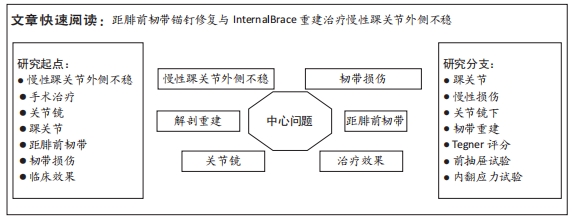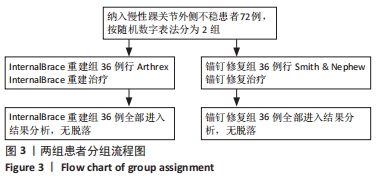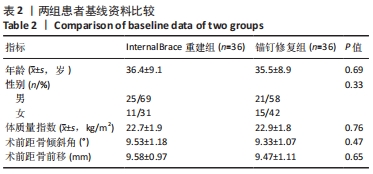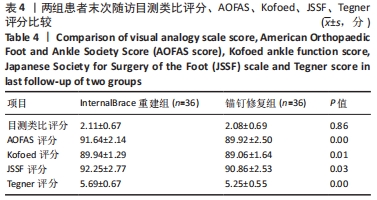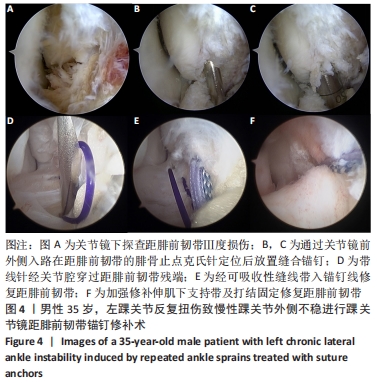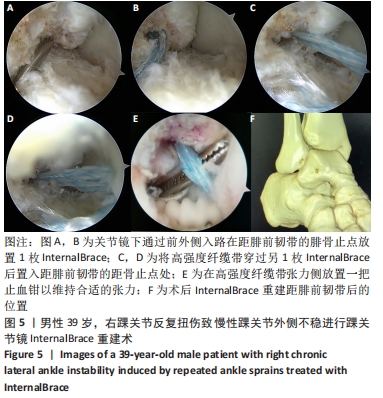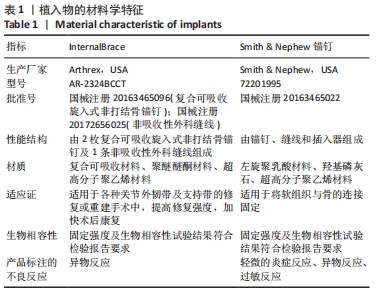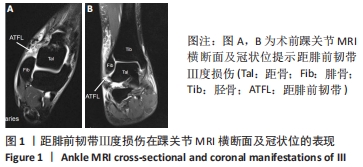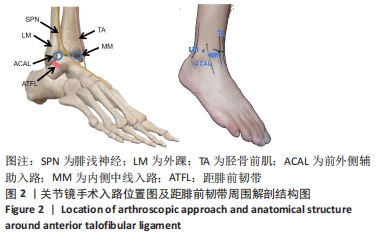[1] FERRAN NA, MAFFULLI N. Epidemiology of sprains of the lateral ankle ligament complex. Foot Ankle Clin. 2006;11(3):659-662.
[2] GUERRA-PINTO F, CÔRTE-REAL N, MOTA GOMES T, et al. Rotational Instability after Anterior Talofibular and Calcaneofibular Ligament Section: The Experimental Basis for the Ankle Pivot Test. J Foot Ankle Surg. 2018;57(6):1087-1091.
[3] MATHENY LM, JOHNSON NS, LIECHTI DJ, et al. Activity Level and Function After Lateral Ankle Ligament Repair Versus Reconstruction. Am J Sports Med. 2016;44(5):1301-1308.
[4] CHOI HJ, KIM DW, PARK JS. Modified Broström Procedure Using Distal Fibular Periosteal Flap Augmentation vs Anatomic Reconstruction Using a Free Tendon Allograft in Patients Who Are Not Candidates for Standard Repair. Foot Ankle Int. 2017;38(11):1207-1214.
[5] ŘEZANINOVÁ J, HRAZDIRA L, MOC KRÁLOVÁ D, et al. Advanced conservative treatment of complete acute rupture of the lateral ankle ligaments: Verifying by stabilometry. Foot Ankle Surg. 2018;24(1):65-70.
[6] PETERSON L, RENSTROM P. Joint ligament injuries.in Sports Injuries, their prevention and treatment.London: Martin Dunitz,1994:22-24.
[7] GUILLO S, BAUER T, LEE JW, et al. Consensus in chronic ankle instability: aetiology, assessment, surgical indications and place for arthroscopy. Orthop Traumatol Surg Res. 2013;99(8 Suppl):S411-419.
[8] FENG SM, SUN QQ, WANG AG, et al. Arthroscopic Anatomical Repair of Anterior Talofibular Ligament for Chronic Lateral Instability of the Ankle: Medium- and Long-Term Functional Follow-Up. Orthop Surg. 2020;12(2):505-514.
[9] COX JS. Surgical and nonsurgical treatment of acute ankle sprains. Clin Orthop Relat Res. 1985;(198):118-126.
[10] GOULD N, SELIGSON D, GASSMAN J. Early and late repair of lateral ligament of the ankle. Foot Ankle. 1980;1(2):84-89.
[11] ARDERN CL, GLASGOW P, SCHNEIDERS A,et al. 2016 Consensus statement on return to sport from the First World Congress in Sports Physical Therapy, Bern. Br J Sports Med. 2016;50(14):853-864.
[12] 严广斌.AOFAS踝-后足评分系统[J].中华关节外科杂志(电子版), 2014,8(4):557.
[13] MURNAGHAN JM, WARNOCK DS, HENDERSON SA. Total ankle replacement. Early experiences with STAR prosthesis. Ulster Med J. 2005;74(1):9-13.
[14] NIKI H, AOKI H, INOKUCHI S, et al. Development and reliability of a standard rating system for outcome measurement of foot and ankle disorders I: development of standard rating system. J Orthop Sci. 2005; 10(5):457-465.
[15] TEGNER Y, LYSHOLM J. Rating systems in the evaluation of knee ligament injuries. Clin Orthop Relat Res. 1985;(198):43-49.
[16] 陈思,万鑫,万业达.踝关节外侧副韧带损伤程度与X线应力位下测量数值相关性分析[J].天津医科大学学报,2022,28(2):173-176.
[17] LINDE F, HVASS I, JÜRGENSEN U, et al. Early mobilizing treatment in lateral ankle sprains. Course and risk factors for chronic painful or function-limiting ankle. Scand J Rehabil Med. 1986;18(1):17-21.
[18] KONRADSEN L, HØLMER P, SØNDERGAARD L. Early mobilizing treatment for grade III ankle ligament injuries. Foot Ankle. 1991;12(2):69-73.
[19] KNUPP M, LANG TH, ZWICKY L, et al. Chronic Ankle Instability (Medial and Lateral). Clin Sports Med. 2015;34(4):679-688.
[20] EVANS DL. Recurrent instability of the ankle; a method of surgical treatment. Proc R Soc Med. 1953;46(5):343-344.
[21] 陈华斌,张涛,瞿瑾,等.距腓前韧带腓骨止点双束解剖重建治疗慢性踝关节外侧不稳[J].中南大学学报(医学版),2021,46(12): 1354-1362.
[22] 杨珍,胡亚哲.慢性踝关节不稳的诊断与修复[J].中国组织工程研究,2014,18(9):1434-1440.
[23] 罗永忠,吴波,赵新刚,等.半腱肌腱联合锚钉重建外侧副韧带治疗慢性踝关节不稳的临床观察[J].中国矫形外科杂志,2013,21(20): 1314-1317.
[24] GUILLO S, TAKAO M, CALDER J, et al. Arthroscopic anatomical reconstruction of the lateral ankle ligaments. Knee Surg Sports Traumatol Arthrosc. 2016;24(4):998-1002.
[25] CHEN C, LU H, HU J, et al. Anatomic reconstruction of anterior talofibular ligament with tibial tuberosity-patellar tendon autograft for chronic lateral ankle instability. J Orthop Surg (Hong Kong). 2018; 26(2):2309499018780874.
[26] 陈守勃.关节镜下带线锚钉解剖修复距腓前韧带治疗踝关节外侧不稳定的疗效分析[J].中国骨与关节损伤杂志,2017,32(3):333-334.
[27] 顾晓晖,洪劲松,毕擎,等.镜下全内距腓前韧带解剖修复治疗慢性踝关节外侧不稳[J].中华创伤骨科杂志,2019,21(4):301-309.
[28] KRIPS R, VAN DIJK CN, LEHTONEN H, et al. Sports activity level after surgical treatment for chronic anterolateral ankle instability. A multicenter study. Am J Sports Med. 2002;30(1):13-19.
[29] KRIPS R, VAN DIJK CN, HALASI T, et al. Anatomical reconstruction versus tenodesis for the treatment of chronic anterolateral instability of the ankle joint: a 2- to 10-year follow-up, multicenter study. Knee Surg Sports Traumatol Arthrosc. 2000;8(3):173-179.
[30] SONG B, LI C, CHEN N, et al. All-arthroscopic anatomical reconstruction of anterior talofibular ligament using semitendinosus autografts. Int Orthop. 2017;41(5):975-982.
[31] TASSIGNON B, VERSCHUEREN J, DELAHUNT E, et al. Criteria-Based Return to Sport Decision-Making Following Lateral Ankle Sprain Injury: a Systematic Review and Narrative Synthesis. Sports Med. 2019;49(4): 601-619.
[32] MAFFULLI N, DEL BUONO A, MAFFULLI GD, et al. Isolated anterior talofibular ligament Broström repair for chronic lateral ankle instability: 9-year follow-up. Am J Sports Med. 2013;41(4):858-864.
[33] 陈天午,李云霞,陈疾忤,等.采用人工韧带或自体月国绳肌腱重建前十字韧带术后重返运动的差异:一项配对设计研究[J].体育科研,2020,41(5):51-57.
[34] FELLER J, WEBSTER KE. Return to sport following anterior cruciate ligament reconstruction. Int Orthop. 2013;37(2):285-290.
[35] 薛啸傲,陶唯楚,陈子怡,等.全镜下踝关节外侧副韧带修补术后重返运动的影响因素研究[J].中华医学杂志,2021,101(37):2975-2981.
|
